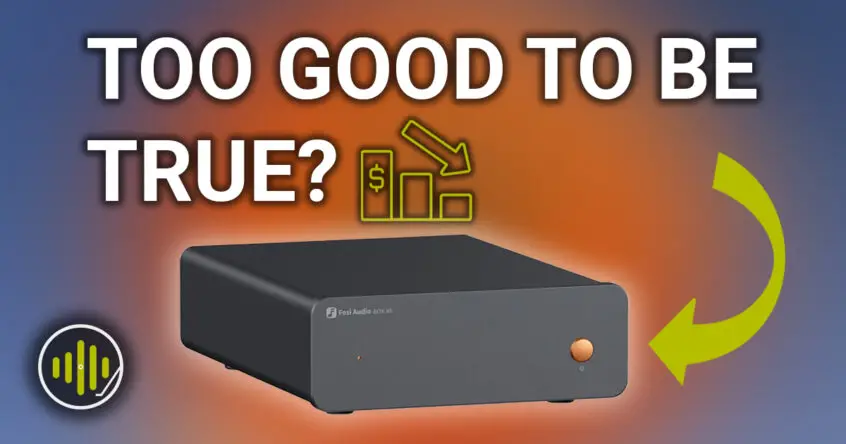My first experience of Fosi Audio products was while reviewing the Box X2 tube phono preamp, and I was suitably impressed. For a phono stage costing as little as $70 (£65), it delivered a lively, energetic sound that I would happily recommend to anyone on a budget seeking their first upgrade from a built-in phono stage.
Since then, Fosi Audio has set out on a product roadmap clearly aiming to corner the affordable HiFi market. The new Box X5 phono preamp joins a plethora of smart, compact boxes promising high performance without breaking the bank.
Coming in at the budget-friendly price of just $139.99, can the Box X5 deliver on this promise, or does it fall short in the competitive world of budget phono preamps?
| Pros | Cons |
| Smart, compact design | No subsonic filter |
| Great sound and quiet performer for the price | Limited control & performance with MC coil |
| Handy upgrade path to moving coil | |
| User upgradable |
Design and Build Quality
Right away, the Fosi Audio Box X5 feels sturdier than you might expect for the price. The brushed aluminum chassis is compact and understated; it’s a noticeable step up in aesthetics compared with the Box X2. It looks and feels much higher-end than the price might suggest.
The front panel is beautifully minimalist, featuring just a copper-coloured power button and LED power indicator aside from the Fosi branding.
The rear panel offers gold-plated RCA inputs and outputs alongside the usual grounding terminal. There’s also a small toggle switch for adjusting between moving magnet (MM) and moving coil (MC) operation, along with a dial for setting four different gain levels (38/48/56/66 dB).
All in all, it’s a simple and elegant box. I like the compact design and the simplicity. It doesn’t have the same level of control as, say, the Schiit Mani 2, for example, which isn’t far away in price at just $149. You can’t change the loading settings like you can on the Mani 2, so when operating an MC cartridge, the Box X5 is fixed to 100Ω.
That said, I’m going to hazard a guess most people considering a Box X5 will be running a MM cartridge.
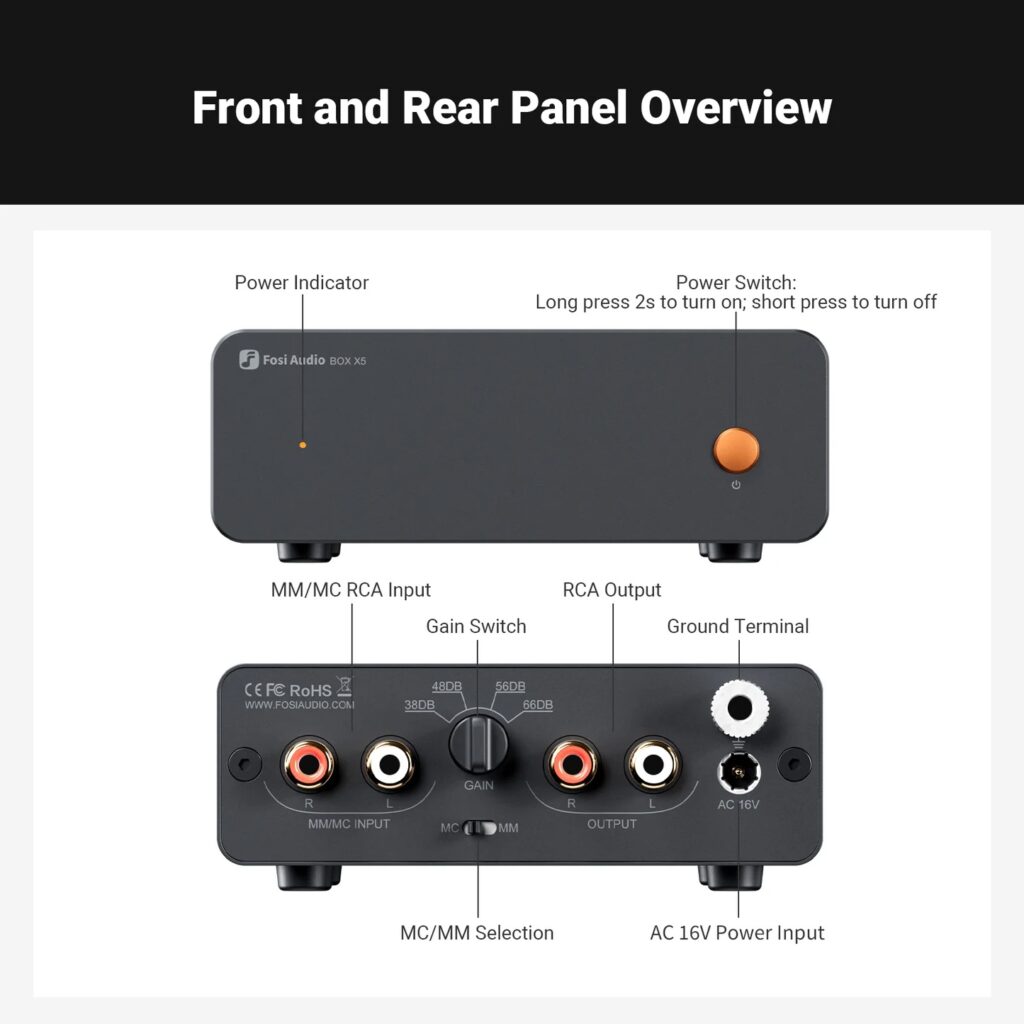
Components & Performance Specs
Fosi Audio are transparent on their website about the components chosen for the X5 and are quick to highlight a few critical audio performance specifications.
They quote a THD (Total Harmonic Distortion) of just ≤0.009%, which, if true, is vanishingly low. For those who don’t know, THD measures how much distortion the preamp adds to the audio signal.
Another impressive stat is the signal-to-noise ratio (SNR), which simply means the strength of the audio signal to the level of background noise (like hiss or hum). Fosi quotes an SNR of 92dB or higher, which, again, if this translates into the real world, is incredibly impressive for the price.
The Box X5 also boasts a tight tolerance to the RIAA equalization curve, claiming to adhere from 20Hz-20kHz (the full range of human hearing) with an insignificant deviation of just ±0.015dB.
Specs, however, can be deceiving, and while I don’t personally have the equipment to measure these specs, the folks at audiosciencereview.com have measured the Box X5 as a third party, and the results do indeed measure well against the hype.
Upgradability
Fans of DIY gear upgrades will welcome the option to swap out the Box X5 op-amps, allowing for user customization of the sonic sound signature.
What is an op-amp, you might ask?
Audio companies have a knack for throwing out specifications and component details without a clear explanation to beginners, so here’s the layman’s answer:
An op-amp (short for operational amplifier) is a small electronic component responsible for boosting the tiny signal from your phono cartridge. In other words, it’s an integrated circuit that can amplify weak electric signals.
The ability to change or even upgrade the op-amps gives you some DIY control over the sound quality and overall tone according to your preference. It’s a nice option for those who like to tweak or squeeze further performance gains from affordable gear.
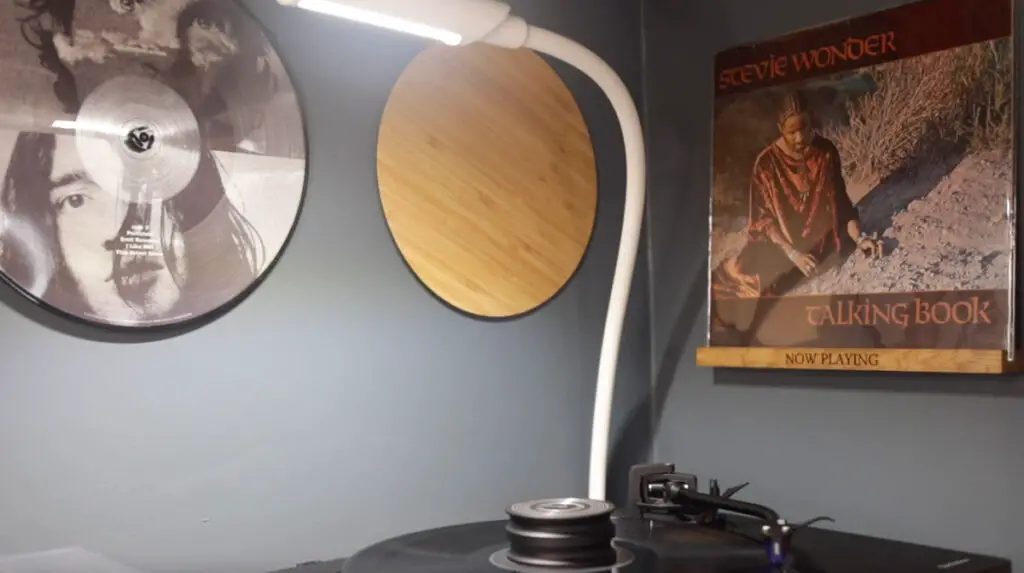
Listening Tests
For the listening tests, I compared the Box X5 to a couple of similarly priced alternatives in my inventory. I chose the JDS Labs Atom Phono ($149) and the Schiit Mani 2 (also $149).
The records I span were The Meters Rejuvenation, Stevie Wonder’s Talking Book, and The Arctic Monkeys AM to name just a few.
The Box X5 holds its own against both alternatives extremely well, pairing nicely with my Ortofon 2M Blue cartridge, delivering a well-balanced and dynamic listening experience that is miles above an average built-in phono stage.
Spinning The Meters, the sound is clean and detailed, producing a tight and groovy bassline that drove the track without overwhelming the mix. In the past, I’ve found the Mani 2 to be a little wooly in the low end with this particular cartridge, but with the Box X5, I hear none of those issues.
On Superstition, the Box X5 showcased the iconic clavinet riff with sharp, crisp precision. Each note had a satisfying attack, making the groove impossible to resist.
The bass was punchy and full, locking in perfectly with the drumline, while the cymbals and hi-hats had a sparkling clarity that never became harsh.
I felt the Atom Phono perhaps had a tad more warmth in the low end, but where the Box X5 excelled was in the mid-range musicality and top-end clarity. The differences, though, are actually quite subtle.
Moving on to The Arctic Monkeys, the track “R U Mine?“ put the Box X5 to the test with its dense, modern production, and the results were impressive. The Ortofon 2M Blue rendered the bassline with power and definition, giving the track its swaggering groove. The crunch of the overdriven guitars was well-articulated, with a satisfying bite that didn’t become muddy. Alex Turner’s vocals remained clear and distinct, cutting through the wall of sound with ease. Even during the track’s heaviest moments, the Box X5 maintained composure, keeping the instruments well-separated and ensuring every detail was audible.
Moving Coil Performance
Though I can’t see the vast majority of Box X5 customers utilizing the moving coil capability, I did give it a test using my Ortofon Quintet Red. The signal-to-noise performance wasn’t quite as impressive as it is was with a moving magnet cartridge, but it was by no means bad.
Keeping signal-to-noise ratio low when dealing with the exceptionally tiny signal levels of moving coil cartridges is a huge challenge, and I simply wouldn’t expect a phono stage at this price-point to perform better than say a dedicated moving coil phono stage like the MC Pro (also reviewed on this site). All in all though, it’s a respectable performance, both from a noise and musicality standpoint, and it’s nice to have the upgrade path for those who want to keep their options open.
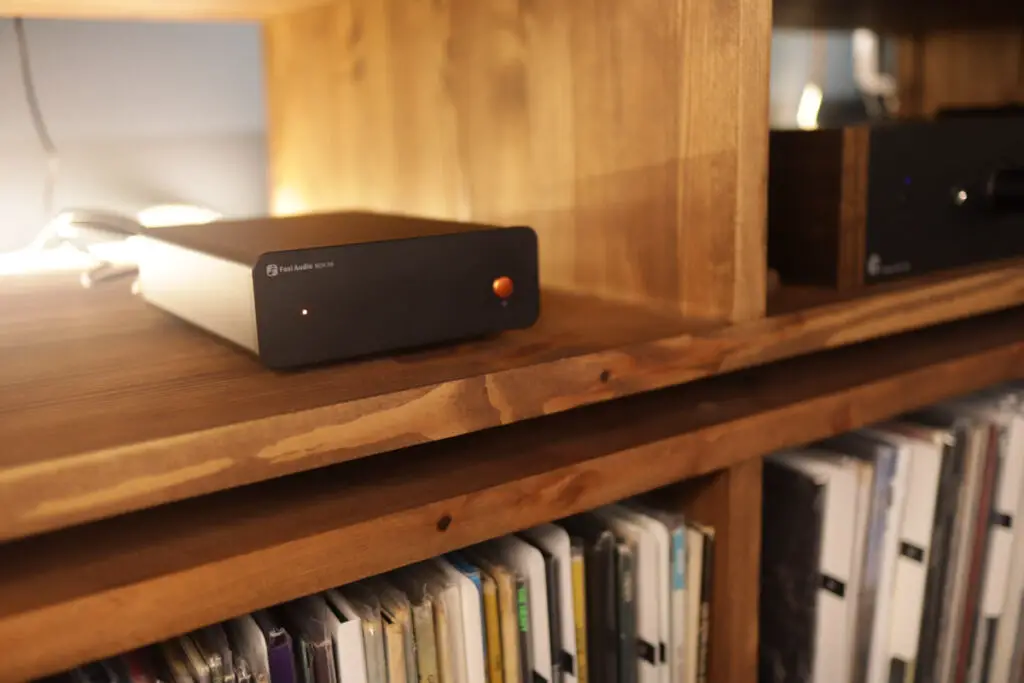
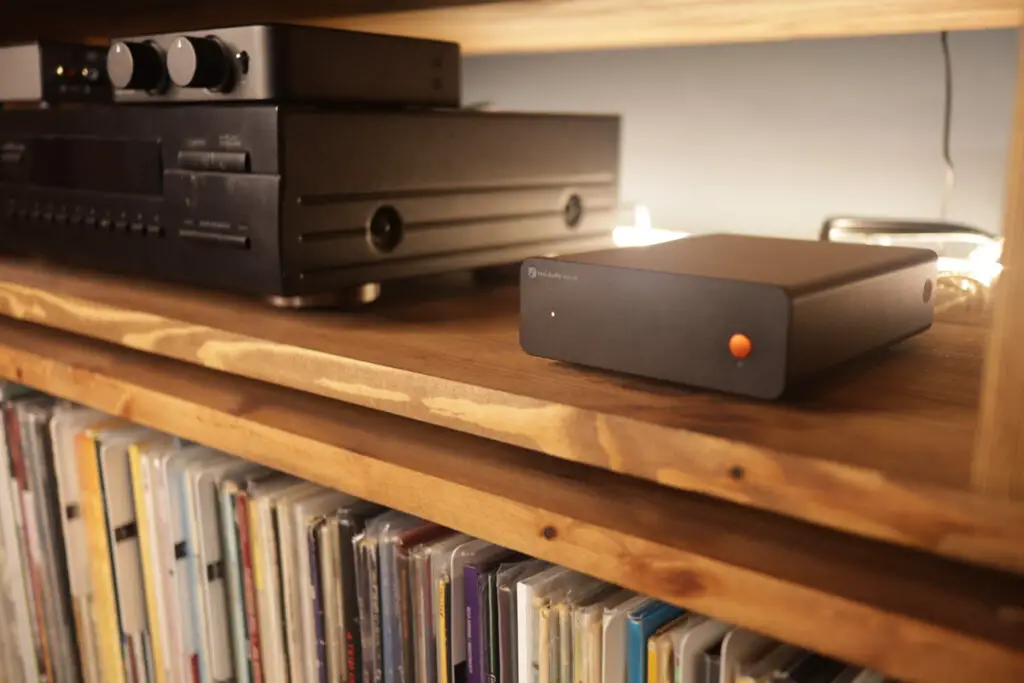
Should You Buy The Fosi Audio Box X5?
I can happily recommend the Box X5 to anyone seeking their first phono stage upgrade. It delivers clean, accurate, and detailed sound without introducing noticeable noise or distortion.
The performance is so good at this price that it leaves one wondering how they manage to turn a profit. I can only put this down to a combination of far-east manufacturing and a direct-to-consumer distribution model.
One feature I would’ve liked on the Box X5 is a subsonic filter to handle any unwanted low-frequency noise or rumble, but at this price, I suppose something has to give.
The MC upgrade path is a nice to have, but it seems to me that anyone moving up to a moving coil cartridge would likely have outgrown the Box X5 phono stage and the production cost might be better placed into a feature like sub-sonic filtering. But that’s just my two cents.
Along with their V3 Integrated Stereo amplifier and their new V3 Mono block amps (my next review, by the way), Fosi Audio are taking the affordable HiFi market by storm.
For many, the Box X5 may be the first and last phono stage they ever need. For others, it could be the start of a sonic journey and some DIY curiosity. One thing is for certain: it’s an incredible start, and I simply can’t complain about the quality on offer at such an attractively low price.
Further reading:
Best Phono Preamps at Any Budget






